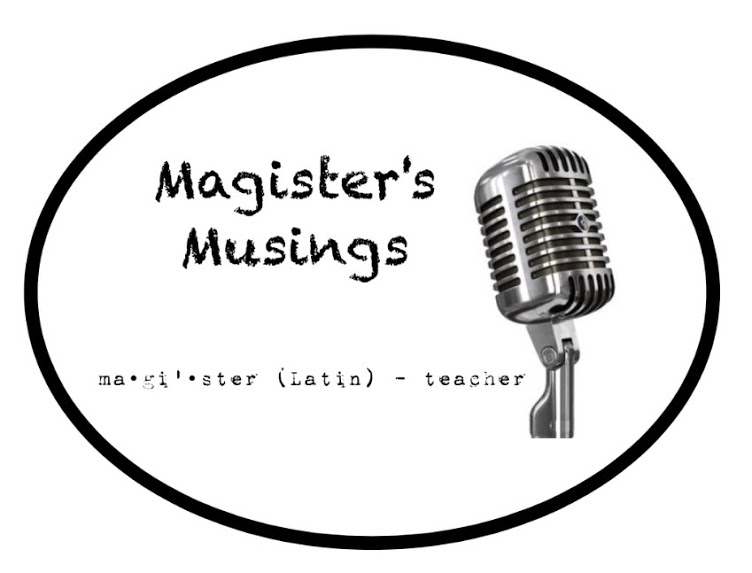In 2011 I was fortunate to receive the Lilly Endowment's Teacher Creativity Fellowship, which allowed me to research and purchase authentic reproduction Roman armor. You can read more about that on my Roman Personas website, but the primary result was bringing to life Gaius Crastinus, first-rank centurion of Legion X, which fought under Julius Caesar. Although he died at the battle of Pharsalus in 49 B.C., Crastinus has been recruiting at middle schools and high school throughout the Midwest for the past few years, and recently he spoke to a group of sixth graders at Scottsburg Middle School.
I met sixth grade social studies teacher Ken Bracey when I visited SMS in several months ago. He had some ancient artifacts in his room that caught my eye, and I mentioned my work as a re-enactor. When I received an email invitation from him to speak to 200 sixth grade students, I passed the word on to Crastinus, who made immediate plans for the Roman army to visit Scott County, Indiana.
Caesar himself would have been proud that day. The sixth graders of SMS were perhaps the most attentive audience I have ever seen. Despite sitting on the floor for a 40-minute presentation, their attention was riveted on what was happening on stage.
After learning about the training regimen of the Roman army, the rewards and the pay, and how to utilize the weapons that conquered the known world, it was time for some practice. Crastinus asked the students questions, and there was a flurry of hands to answer each one. (One a side note, I must confess that without my glasses, I do not see much at all. Calling on students in a setting like this mostly involves pointing in the general direction of motion and calling out, "Yes! You there!")
Eight students were selected in all, and when they were on stage, Crastinus presented them with a spear, sword, helmet, or shield. That's pilum, gladius, galea, or scutum for you Latin-speakers! He then put them through the paces of forming a battle line and following basic directions.
When it all was over, Ken and his colleague Martha Clapp were brave enough to take a picture with Centurion Crastinus, who was a bit puzzled over what was happening. Someone stood in front of them holding what looked like a wax tablet. In fact the device was even called a tablet, yet the person merely tapped it with her finger rather than using a bone stylus to scratch on its surface.
Ken later shared with me the single best comment I have ever received after a reenactment. One of his students came up to him and asked, "Is he really a real soldier?" I am glad that for one young man I seemed so, and it was truly a thrill for me to be among such excited and eager young learners.


































